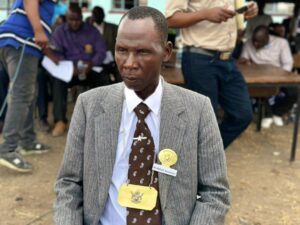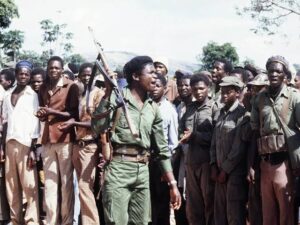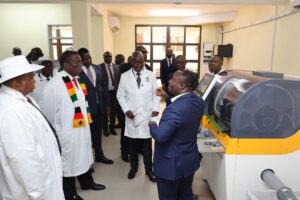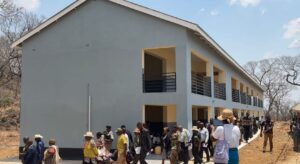Mbira, The Ancient Voice of Zimbabwe That Refuses to Be Silenced
5 min read
Feature – For over a thousand years, the haunting, melodic tones of the mbira—Zimbabwe’s iconic thumb piano—have echoed through valleys, across rivers, and deep in the spiritual heart of African culture.
More than just a musical instrument, the mbira is a gateway to ancestral communication, a cultural identity marker, and a profound symbol of resilience for the Shona people and Zimbabwe as a nation.
Today, as modern genres dominate radios and streaming platforms, the mbira continues to fight for its space—not just as traditional music, but as a world instrument representing African ingenuity, spirituality, and cultural continuity.
The mbira is believed to have originated over 1,000 years ago across regions of present-day Zimbabwe and Mozambique.
The Shona people developed and refined the instrument into various forms, the most iconic being mbira dzavadzimu—literally, “mbira of the ancestors.”
Traditionally, it consists of metal keys mounted on a wooden soundboard (gwariva), often placed inside a calabash resonator (deze) to amplify the sound.
The mbira is more than wood and metal. It is believed to carry spiritual power.
In traditional bira ceremonies, mbira music invites ancestral spirits, vadzimu to communicate with the living.
The polyrhythmic patterns and cyclic melodies induce trance-like states, allowing mediums to receive guidance, prophecies, or blessings from the ancestors.
Mbira music is not entertainment—it is healing, history, and heritage.
When communities play the mbira, they are never playing alone. The ancestors play with them. That is the long held belief.
British colonial rule attempted to silence the mbira, branding it “pagan” and “primitive.”
Mission schools banned traditional practices and introduced Western musical instruments like the piano and violin while demonising African spirituality.
Families hid instruments in granaries. Secret ceremonies were held in forests and mountains.
The mbira became a symbol of resistance, carrying coded messages of freedom during the liberation struggle.
War songs, though simple in lyrics, were layered with mbira-rooted rhythm and meaning.
Despite attempts to erase it, the mbira refused to disappear. It endured because it belonged to the people, not the powerful.
Several iconic custodians helped preserve and globalise mbira music,
- Stella Chiweshe (Mbuya Stella), the
First international female mbira star; global advocate for Zimbabwean traditional music popularized the mbira across the globe.
Renown traditional music icon and mbira advocate and teacher, Dumisani Maraire
Introduced mbira to North America in the 1960s and established mbira teaching programmes across continents.
The efforts of Forward Kwenda, a man who bore the
revered tunes rich with spiritually deep styles known as kushaura nemhonde made the mbira sound popular.
Cosmas Magaya
Promoted mbira through the Zimbabwe Musicians Union and academic collaborations. This alone contributed significantly to the growth and preservation of the traditional Mbira culture.
With the efforts of Chartwell Dutiro who
Blended mbira with modern genres in the UK and taught mbira to global audiences, mbira tradition has been preserved.
Mbira dzeNharira and other traditional mbira playing groups
revolutionised the ensembles that played mbira music in Zimbabwe’s post-independence era.
From Harare’s Mbare studios to global world music festivals, the mbira has found a home in diverse sounds.
Zimbabwean artists such as Chiwoniso Maraire, Hope Masike, Tuku (Oliver Mtukudzi), and Thomas Mapfumo have incorporated mbira in Afro-jazz and chimurenga music.
Hip-hop and Afrobeats producers are sampling mbira tones, while experimental artists are fusing it with electronic music and reggae.
Young Zimbabweans in the diaspora are reviving mbira classes.
Universities across Europe and America now teach mbira ethnomusicology.
UNESCO added Mbira music of the Shona people to its Representative List of the Intangible Cultural Heritage of Humanity—a global acknowledgement of its cultural importance.
A typical mbira dzavadzimu has 22 to 28 iron keys arranged in three manuals (left, right, and upper register)
The Gwariva soundboard is made of mubvamaropa wood.
The Deze is the calabash resonator that has created a unique African sound that has popularized the rhythmic mbira sound.
The Makunda has wire threaded with bottle caps or shells for buzzing resonance
The Nzungu wax securing keys and adding tone color
The spiritual vibrations come from its characteristic buzzing sound, believed to attract ancestral spirits.
Mbira songs are not random melodies—they are rich archives of history and wisdom.
Pieces like, Nyamaropa – among the oldest Shona melodies, Nhemamusasa – a calling song for protection and strength, Taireva – a storytelling tune about truth and mystery, Karigamombe – symbolises defeating a bull or overcoming great obstacles among other mbira tunes.
These compositions carry coded cultural messages passed down orally from master to apprentice.
Despite global admiration, mbira culture faces serious threats.
Some foreign producers sample mbira sounds without credit or compensation.
The cultural context is lost when mbira is reduced to a “sound effect.”
Urbanisation and school systems that prioritise Western music mean fewer young Zimbabweans are learning authentic mbira playing within cultural context.
Craftsmen who forge mbiras by hand struggle financially as imports of cheap, low-quality instruments flood markets.
Some religious groups still stigmatise mbira, viewing it as “witchcraft,” despite its proven cultural and artistic value.
But hope is alive. Zimbabwean cultural activists are rebuilding pride in mbira tradition.
Mbira Centres across the country and specifically in Harare offer lessons and builds mbira instruments.
The Zimbabwe College of Music incorporates mbira in its curriculum, helping to popularize the Mbira music and the mbira instrument.
With festivals such as the Mbira Festival that has lit up Gweru, Harare, Bulawayo and other places across Zimbabwe brings players together annually.
Schools like Prince Edward, Mufakose High 2 & Chinhoyi High promote mbira clubs that have brought access to and appreciation of the mbira rhythm to learners early in their lives.
Online platforms now offer mbira music streaming and virtual tutorials.
“Mbira is our identity. If we lose mbira, we lose a part of ourselves,” says mbira teacher Hope Masike. “We must not let globalisation erase our roots.”
The next generation is giving mbira a futuristic shape—plugging instruments into amplifiers, using effects pedals, merging mbira with digital beats and global collaborations.
Yet the heart of the music remains unchanged: prayer, meditation, rhythm, and ancestry.
The mbira is no longer just a Shona instrument. It is now a global African instrument.
The story of the mbira is the story of Zimbabwe—spiritual, resilient, creative, and enduring. It survived missionaries, colonisers, and modern neglect. It now stands tall, inviting the world to hear an ancient sound still as fresh and relevant today.
The question is, will Zimbabwe protect and promote the mbira before the rest of the world claims it first?
As long as its notes are played—by a child learning their first pattern or a master summoning ancestors at midnight—the voice of mbira will never die.
———————————
Zim Global Media News 🗞️
an Afrocentric Voice







